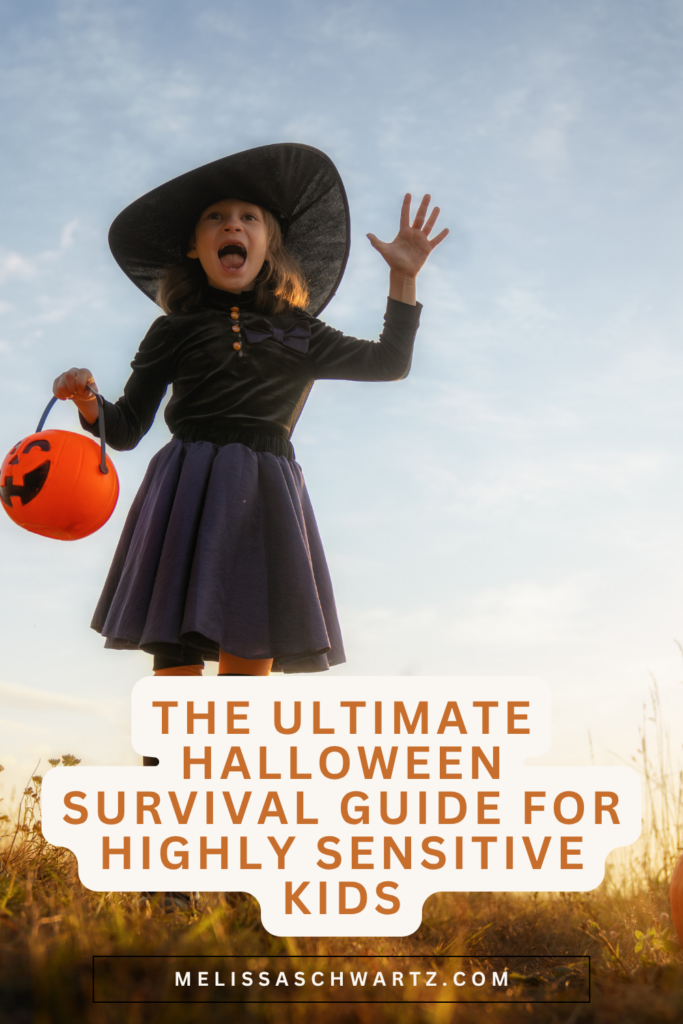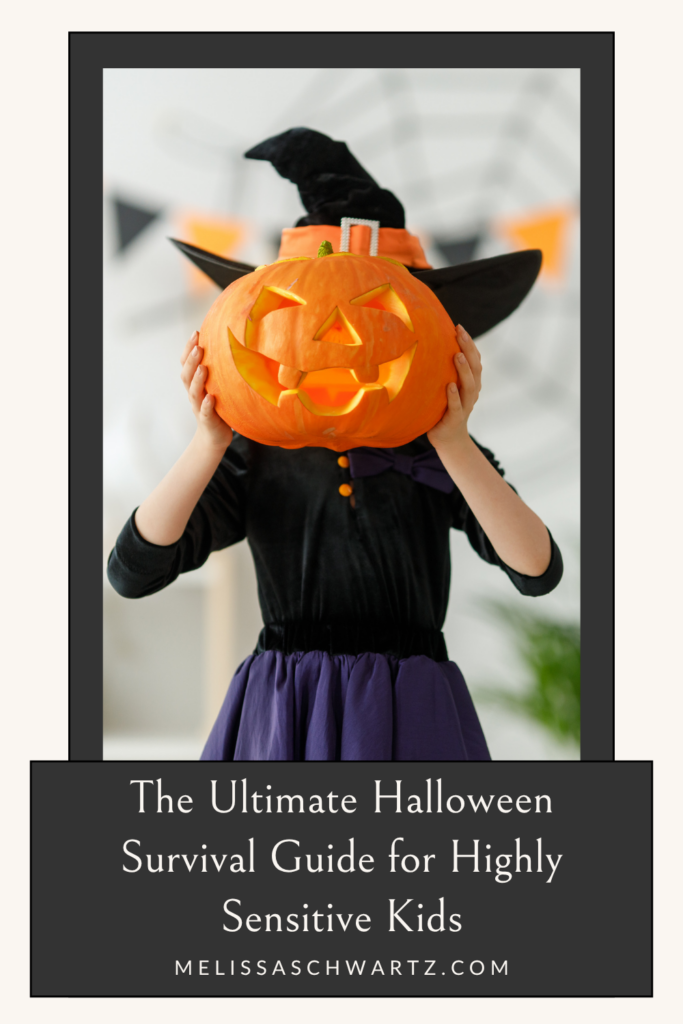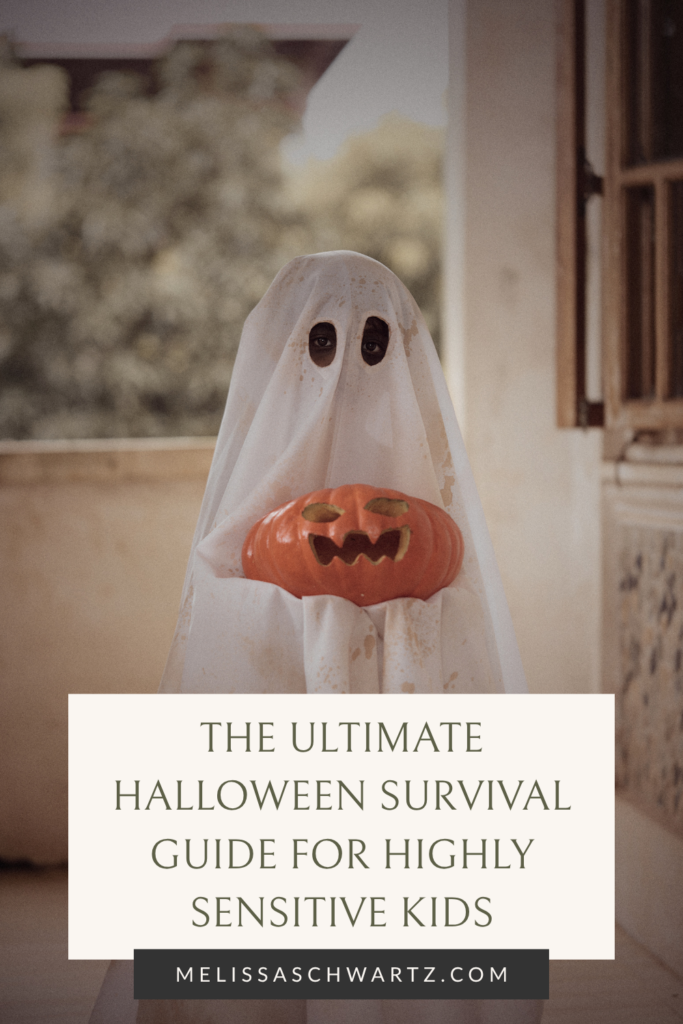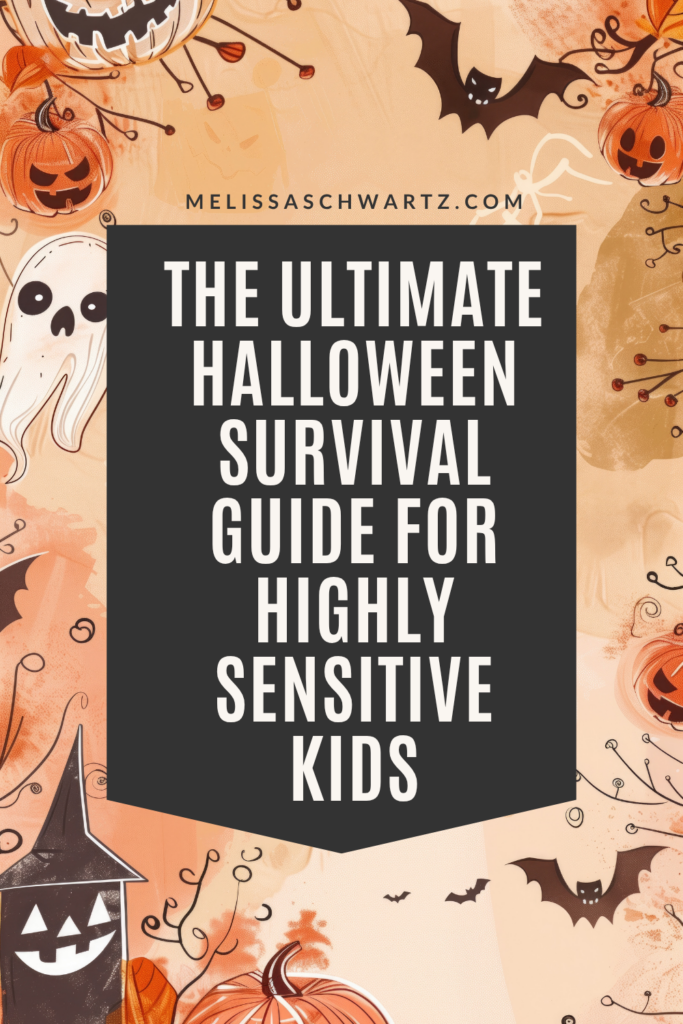For many families, Halloween is all about costumes, candy, and fun-filled chaos. But for highly sensitive kids, the holiday can feel more like a sensory overload than a celebration. Between bright lights, unpredictable noises, and unfamiliar faces, it’s easy for a child highly sensitive to feel overwhelmed.
This doesn’t mean your family has to skip Halloween altogether; it simply means approaching it with awareness and compassion. Every highly sensitive child experiences the world through a heightened nervous system, taking in more sensory input and emotional energy than others might notice. With a few thoughtful adjustments, you can create a holiday that honors your child’s unique, sensitive personality and helps them feel safe, seen, and supported.

Understanding Highly Sensitive Kids at Halloween
Highly sensitive children process the world deeply. Their nervous system is finely tuned, making them more attuned to sights, sounds, textures, and emotions. What seems exciting to one child, a crowded neighborhood full of costumes and laughter, can feel intense or even frightening to another.
These kids may:
- Startle easily at unexpected noises (like sudden doorbell rings or spooky sound effects).
- Feel discomfort with itchy or tight costumes.
- Experience strong emotional reactions to scary decorations or strangers in masks.
- Need extra time to transition between activities.
Recognizing these traits of highly sensitive children isn’t about labeling or limiting them, it’s about understanding how your child experiences the world so you can create an environment where they thrive.
Remember: Every highly sensitive child is different. Some may love the excitement of trick-or-treating, while others prefer a calm night at home. The goal isn’t to avoid Halloween, it’s to shape it around your child’s comfort level.
Costume Comfort: Preparing in Advance
Costumes can be one of the biggest sources of discomfort for highly sensitive kids. Fabrics that itch, tags that scratch, or masks that limit vision can quickly turn excitement into distress.
Tips for a Sensory-Friendly Costume:
- Try it on early: Let your child wear their costume several times before Halloween. This helps their nervous system adjust to the new textures and sensations.
- Prioritize comfort: Choose soft, breathable fabrics, remove tags, and avoid anything restrictive or bulky.
- Stick with familiar favorites: If your child loves a certain movie or character, build their costume around that. Familiarity reduces anxiety.
- Wear it more than once: Repetition helps sensitive children develop positive coping mechanisms. Wearing the costume for playtime or a family photo shoot before Halloween can make the big night feel less intimidating.
If your child highly sensitive resists dressing up, that’s okay too! A themed T-shirt, cozy pajamas, or a simple accessory like cat ears or a cape can still make them feel festive, without pushing their limits.

Mindful Candy Choices
For many kids, Halloween equals sugar. But for highly sensitive children, excessive sugar or artificial dyes can trigger emotional or behavioral changes that impact their mental health and mood regulation.
Mindful Candy Ideas:
- Less food dye, more real ingredients: Look for natural treats made without artificial colors or preservatives.
- Homemade goodies: Try making healthy candy bars with almond flour, dark chocolate, and natural sweeteners.
- Sugar-free or low-sugar options: Some families choose to swap traditional candy for non-food treats like stickers, glow sticks, or small toys.
- Balance is key: Every child experiences their body differently, what overstimulates one may not affect another. Pay attention to how your kids feel after different treats, and adjust accordingly.
Disclaimer: Food sensitivities vary widely. It’s not about perfection; it’s about finding balance and supporting your child’s unique system.
Alternatives to Trick-or-Treating
While some highly sensitive kids enjoy trick-or-treating, others may find it too unpredictable, the costumes, the crowds, the dark streets. That’s okay. There are plenty of ways to celebrate the spirit of Halloween without forcing an uncomfortable experience.
Fun Alternatives:
- Host a “Trunk or Treat” Event: These community gatherings often happen in daylight, with decorated car trunks and familiar faces. It’s a smaller, safer environment that limits surprises.
- Movie Night Magic: Let your child dress as their favorite character and host a themed movie night with popcorn and a cozy blanket fort. It gives them a sense of celebration in a controlled, calm environment.
- Candy Helper Station: Some sensitive kids love giving rather than receiving. Let your child help hand out candy—they still get to dress up, greet neighbors, and join the fun at their own pace.
- Neighborhood Walk: If trick-or-treating feels too overwhelming, simply stroll the neighborhood together to admire decorations without pressure to engage.
Disclaimer: Every highly sensitive child is unique. Some might genuinely love trick-or-treating, and that’s wonderful! Others may need quieter traditions. Follow your child’s lead and adjust as needed.

Supporting Your Child’s Emotional Well-Being
Halloween can stir up big feelings, excitement, fear, anticipation, or disappointment. As parents of highly sensitive children, your calm presence becomes the anchor.
Here are a few gentle ways to support your child’s mental health and coping mechanisms during this overstimulating holiday:
- Prepare in advance: Talk about what will happen, when, and where. Predictability soothes a sensitive nervous system.
- Give them choices: Ask if they’d rather pass out candy, go to a few familiar houses, or watch a movie. Autonomy builds confidence.
- Have a safe space: Whether at home or in the car, make sure there’s a calm area where your child can rest if they feel overwhelmed.
- Validate their emotions: When your child experiences fear or frustration, acknowledge it rather than dismiss it. “That noise startled you, huh? It was really loud!” helps them feel understood and regulated.
- Model calm: Your grounded energy teaches them how to self-soothe. When you stay steady, your child learns that it’s safe to relax, too.
Creating a Halloween That Feels Safe and Sweet
Halloween doesn’t have to be all or nothing. With a few thoughtful adjustments, it can become a cherished tradition rather than a source of stress. Whether your highly sensitive kids are dressing up as superheroes, staying home for a cozy night in, or joyfully handing out treats, what matters most is that they feel safe and loved.
Remember, being a child highly sensitive isn’t a challenge to fix, it’s a beautiful trait of highly sensitive individuals who experience the world deeply and vividly. When we honor their needs, we help them grow confident in who they are—and that’s the best kind of magic there is.
Support for Families Raising Highly Sensitive Kids
If your home feels more like survival than peace, you’re not alone, and you don’t have to figure it out by yourself.
I’m Melissa Schwartz, author, parenting expert, and intuitive coach for families raising emotionally intense, deeply feeling children. I help parents and kids (ages 7 and up) build emotional regulation, set loving boundaries, and bring calm back home, without shame, yelling, or power struggles.
If you’re ready for a new way forward, I’d love to help you find it.
Book your free intro call now
If you enjoyed this article, The Ultimate Guide to Halloween for Highly Sensitive Kids, you might also enjoy:
- Top 10 HSP Heroes: Highly Sensitive Characters in TV and Movies Who Show Sensitivity Is a Superpower
- Healthy Power: The Parenting Approach That Stops Power Struggles Before They Start
- Yellow Rock vs. Grey Rock: Which Is Better for You (Especially If You’re an HSP)?
Pin-it for later: The Ultimate Guide to Halloween for Highly Sensitive Kids




